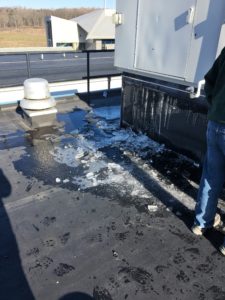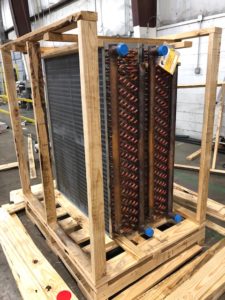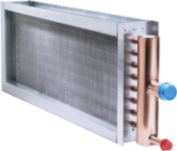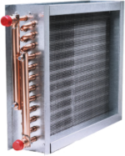Regardless if you have steam coils or steam distributing (non-freeze) coil, you can freeze ANY coil. When freezes happen, everyone immediately looks to the steam coil as the cause. When in fact, there are numerous reasons that must be looked at well before the coil.
Freezes generally happen in older systems, however if your new system is not maintained properly or correctly installed, your steam coil can and will freeze. For instance, you’d be surprised at how many times dampers are left open, controls fail, freezestats don’t work, etc.
In a Standard Steam or Steam Distributing Coil, a freeze-up can occur when condensate freezes within the tubes of the steam coil. The two most common reasons for freezing steam coils are the steam trap and the vacuum breaker. The function of steam trap is to remove the condensate as soon as it forms. Condensate usually collects in the lowest part of the coil. If your steam trap isn’t installed properly, that condensate will lay in the coil and it will inevitably freeze as soon as it sees outside air. The vacuum breaker also helps clear the condensate, minimizes water hammers, and helps with uneven temperatures. This must be installed on the control valve and always above the steam trap.
Unfortunately, there are no ways to determine exactly where your steam coil will freeze. And a common misnomer is that the condensate turns to ice and the expansion is what causes the tubes of the coil to pop. In reality, it’s the pressure that builds up between freeze points.
Here’s couple tips in your coil design that can help prevent your standard steam and steam distributing coils from freezing:
- Standard steam coils should NEVER see any outside air below 40 degrees. If it does, steam distributing is the only way to go!
- 5/8” OD Steam distributing coils over 72” long are recommended to have a dual supply
- 1” OD Steam distributing coils over 120” long are recommended to have a dual supply
- Make sure your steam coil is pitched if possible. This slopes the condensate to the return connection making it easier to remove the condensate
Give Capital Coil & Air a try on your next project. Our engineering, pricing and service is the best in the industry!
RELATED POSTS
Heating Season Will Soon Be Upon Us



